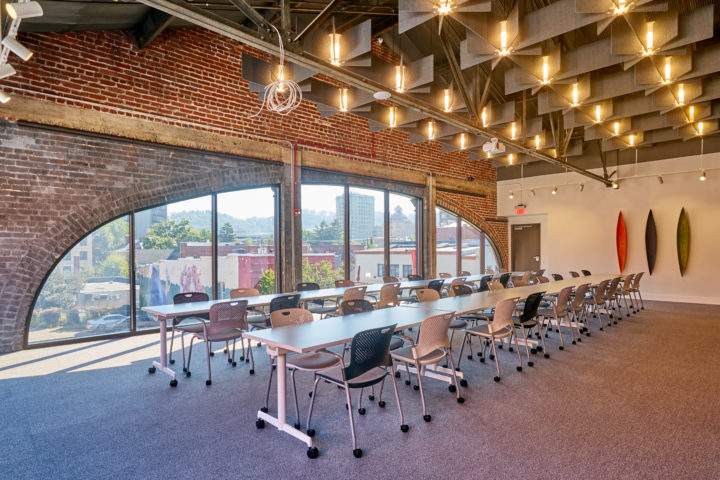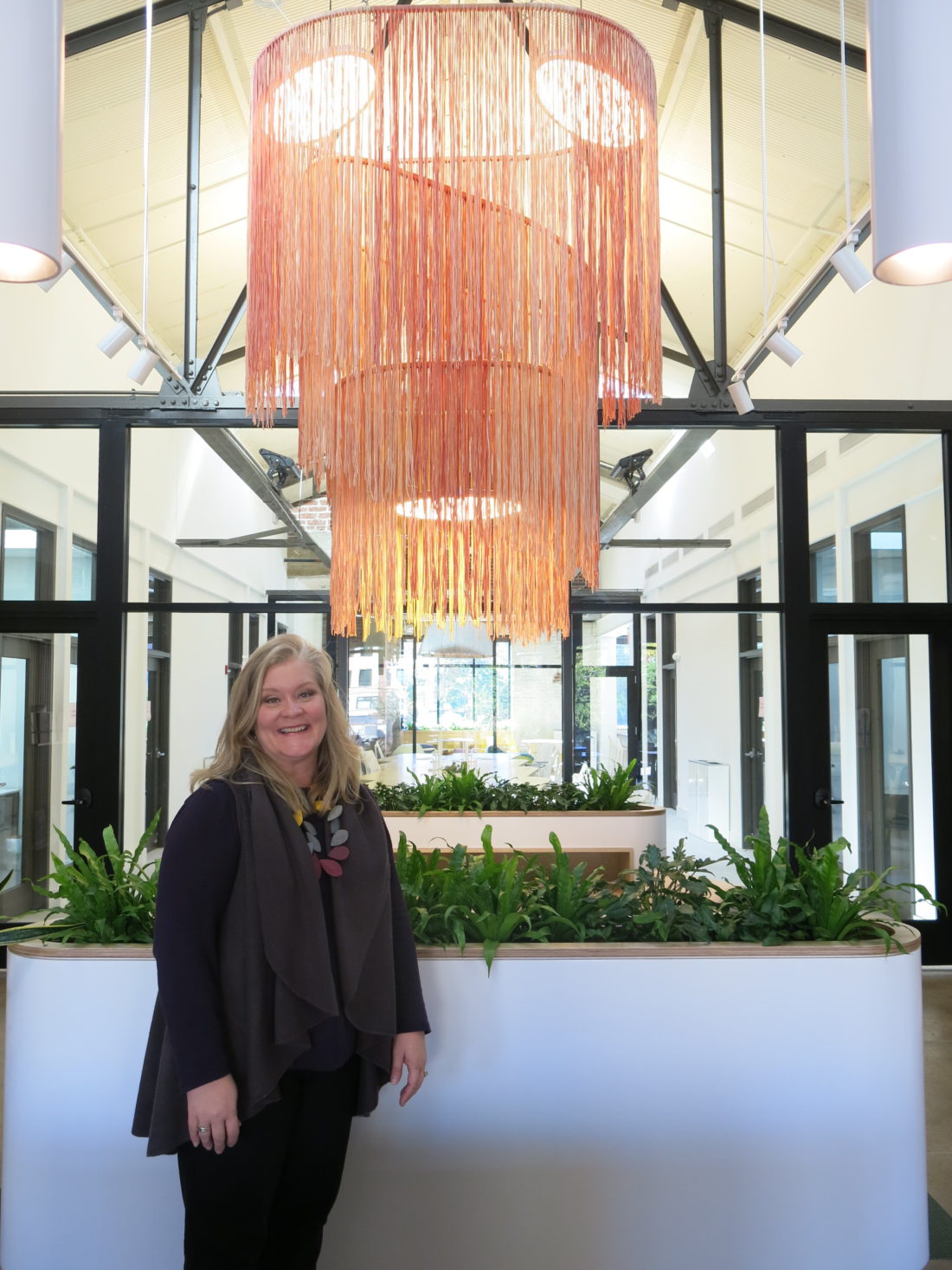When Stephanie Moore joined the Center for Craft in 2010, the nonprofit operated on a 55-acre site in Hendersonville, close to the community of Horse Shoe. “I saw it had a really big mission — to advance the understanding of craft — but it was tucked away,” remembers Moore, who serves as the organization’s executive director. “We might have had 300 people visit each year.”
Today, the center is anything but tucked away. Having relocated to the northern edge of downtown Asheville in 2013, the nonprofit sees an estimated 11,000 visitors per year. And with its recent renovations, which added 7,000 square feet to the space, Moore is optimistic the site will only continue to attract more visitors and makers alike.
On Saturday, Nov. 16, after nearly a year under construction, the Center for Craft will celebrate its grand reopening. The free event will feature new exhibits, a building tour, future-themed immersive installations, hands-on activities, music and food.
The building’s main floor, Moore pointed out during a recent preview tour, has nearly doubled in size. The augmented space now includes two galleries as well as a craft study collection featuring center-funded publications and research.
“It used to be that you’d come in and we would be dark for a couple of weeks to get the exhibition up,” she says. But with an additional gallery in play, she continues, the lights will always be on for at least one of the displays.
Exhibits for the Nov. 16 reopening include Craft Futures 2099 and Making Meaning. The former features 10 national makers, all exploring ideas of what craft might look like in another 80 years. “You’re going to see a lot of neon, a lot of digital, a lot of holograms,” says Moore. Meanwhile, the latter exhibit includes 14 UNC Asheville alumni, “whose work shifts our perceptions of material, method and meaning,” a recent press release states.
A major portion of the project’s $3.9 million went toward gutting the building’s entire second floor. “We’re calling this whole level the National Craft Innovation Hub,” Moore explains. The coworking space offers options from private offices to part-time flex-desks to day passes. “The goal here is to create a space where creatives come together. This isn’t where making happens,” she emphasizes. “This is where the business or office side of making occurs.”
Custom-built furniture fills the various new rooms and work areas. A back lounge features whimsical, anthropomorphic chairs by contemporary artist Tanya Aquiñiga. On the other side of the building, near the reception desk, a large-scale tiered textile installation is suspended from the ceiling. Created by local design studio Shelter Collective, the piece consists of thousands of individual strands of cotton sourced from Echoview Fiber Mill and dyed with local plants.

In addition to meeting spaces and offices, the second floor (along with the building’s mezzanine), features flexible work stations, allowing the Center for Craft to flip its larger rooms for evening events. Workshops and lectures will be the focus for these nighttime gatherings. The mezzanine will also be used for board meetings and more intimate get-togethers.
“The goal of this project was to be as flexible as possible,” Moore says. “Expand and contract based upon demand.”
Though eager for the center’s grand reopening, Moore is far from content. She notes the latest renovations are just the start of a three-phase project. Future plans include transforming the basement into a makers space and redeveloping the adjacent parking deck, which the center owns.
“We have found a wonderful place in Asheville to advance the understanding of craft,” says Moore, as the tour nears its end. While many locals are familiar with craft’s history and contributions to the region, she explains, the city’s tourism industry allows the center to reach a larger, less informed audience.
“It’s really important for people to know there is this tactile, physical aspect of making that they can find here and that they can research here and that they can discover here,” she says.
Further, Moore sees the Center for Craft as just one of several entities contributing to what she deems Broadway’s “cultural corridor.” Pointing toward the busy thoroughfare, which turns into Biltmore Avenue, she enumerates some of the additional sites: The Moogseum, The Wortham Center for the Performing Arts and the Asheville Art Museum.
“This is a very rich, for lack of a better word, density of cultural activity that you don’t get on Patton Avenue,” she continues. “But directly from here to The Orange Peel, if not a little bit farther, you just have all of these incredible venues — and this in a small city of 90,000.”
WHAT: Center for Craft’s grand reopening
WHERE: 67 Broadway, centerforcraft.org
WHEN: Saturday, Nov. 16, 2-6 p.m.




Before you comment
The comments section is here to provide a platform for civil dialogue on the issues we face together as a local community. Xpress is committed to offering this platform for all voices, but when the tone of the discussion gets nasty or strays off topic, we believe many people choose not to participate. Xpress editors are determined to moderate comments to ensure a constructive interchange is maintained. All comments judged not to be in keeping with the spirit of civil discourse will be removed and repeat violators will be banned. See here for our terms of service. Thank you for being part of this effort to promote respectful discussion.